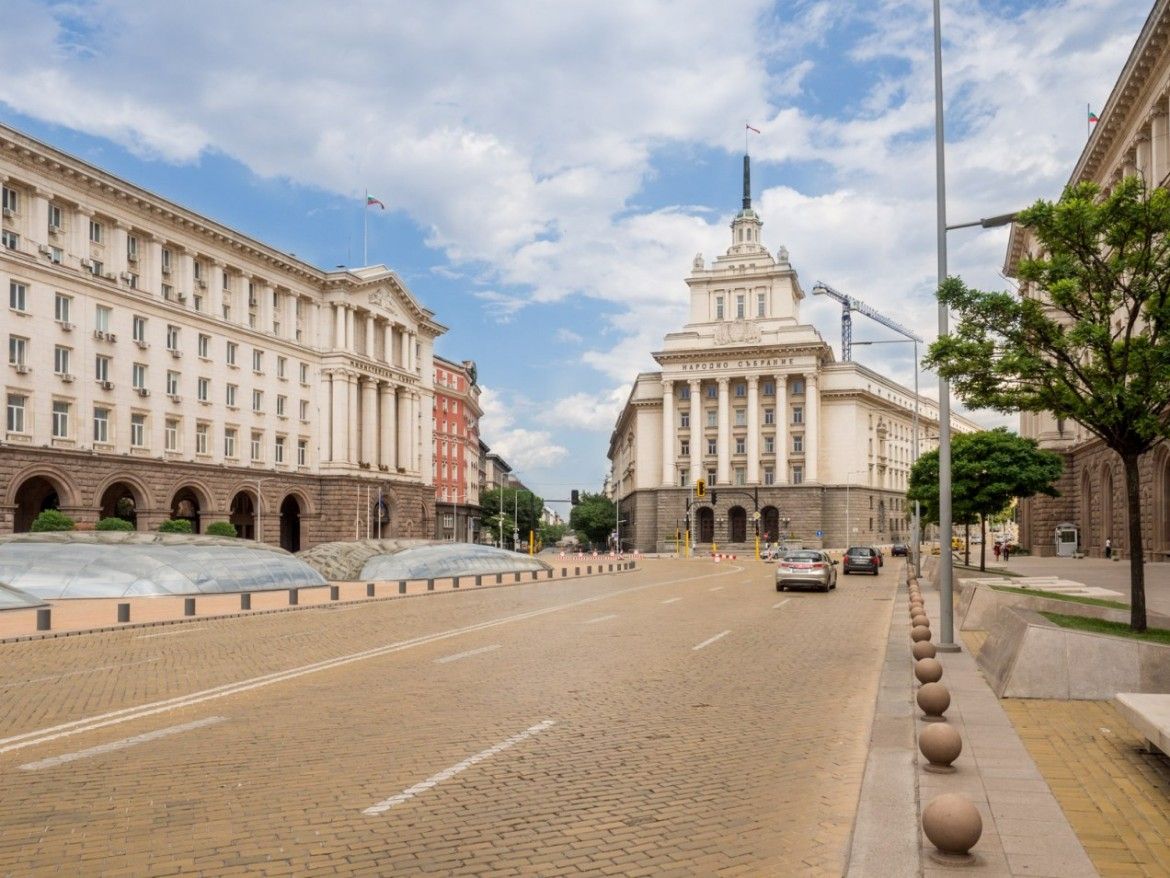Reading
Listening and reading activity. Choose the best option.
 Independence
Independence
Square in Sofia, Bulgaria
Independence Square, also known locally as "Ploshtad Nezavisimost", is one of the most important and iconic public spaces in Sofia, the capital of Bulgaria. Situated at the very heart of the city, it is often considered the political and administrative center of Sofia. The square holds significant historical, cultural, and architectural value and is surrounded by some of the most prominent buildings in the country.
Independence Square is part of a larger architectural ensemble that reflects the socialist-era urban planning style, often referred to as Stalinist architecture or Socialist Classicism. The square was initially designed and developed during the 1950s, a time when Bulgaria was under communist rule and closely aligned with the Soviet Union. The buildings around it were constructed to represent state power and unity.
The most notable buildings surrounding Independence Square are often called the “Largo”, which includes three main structures:
- The former Communist Party House (now used by the National Assembly of Bulgaria)
- The Council of Ministers
- The Presidency Building
These structures are lined up in a monumental style with grand facades, high colonnades, and symmetrical design, showcasing the might of the government at the time. Today, however, the square has become a symbol not of political power, but of democratic transformation and national pride.
One of the most fascinating features of the square is the ancient Roman ruins discovered beneath it. During renovation works in the early 2000s, parts of the ancient city of Serdica (the Roman name for Sofia) were uncovered. These archaeological remains are now visible through glass panels and open-air displays that allow locals and tourists to admire Roman streets, buildings, and infrastructure dating back nearly two millennia. A portion of the Roman Decumanus Maximus (main road) has been preserved and integrated into the urban landscape.
The square is also connected to Sofia’s Metro system, with Serdika Station located directly beneath it. This makes it one of the busiest pedestrian hubs in the city, where commuters, tourists, and locals converge. From here, you’re within walking distance of many key landmarks, including St. Nedelya Church, TZUM shopping center, the Rotunda of St. George, and Vitosha Boulevard, Sofia’s main commercial street.
In recent years, Independence Square has been a site for public demonstrations, cultural events, and festivals, reflecting its ongoing role in Bulgaria’s social and civic life. The square continues to evolve, blending its historical layers — Roman, Ottoman, Communist, and Democratic — into a unique space that tells the story of Sofia through its stones, structures, and people.
Today, standing on Independence Square means standing on the crossroads of history — a place where ancient civilization meets modern governance, and where the people of Sofia come together to celebrate, protest, or simply pass through.